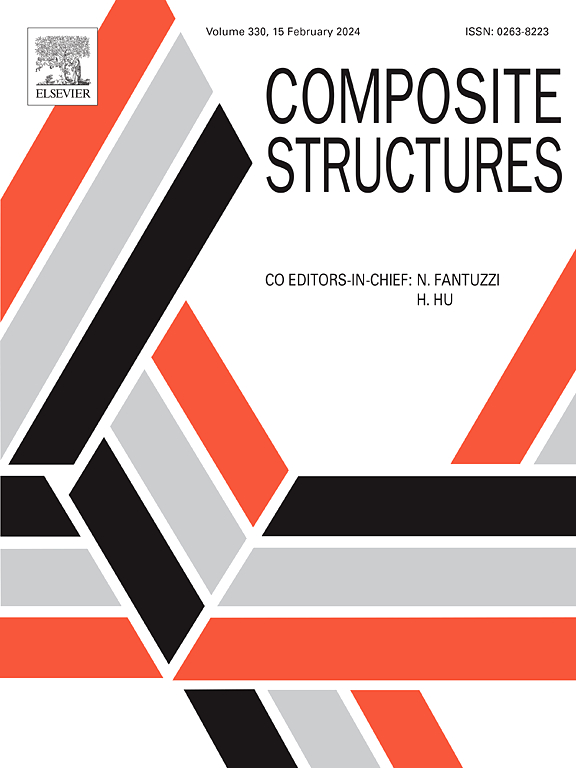Shear stiffness model for an innovative Y-shaped connector with UHPC grout in composite structures
IF 6.3
2区 材料科学
Q1 MATERIALS SCIENCE, COMPOSITES
引用次数: 0
Abstract
Precast concrete deck panels (PCDPs) with shear pockets offer several advantages to accelerate bridge construction. In this paper, a Y-shaped connector was proposed, which was placed intermittently in the ultra-high-performance concrete (UHPC) shear pockets of PCDPs in composite structures. To assess the shear behavior of the Y-shaped connector, push-out tests were performed by varying plate width and thickness, diameter of the penetrating rebar and perfobond hole, and type of grout. The load-slip curves, failure modes, strain analysis, and shear behaviors were investigated. Then, validated finite element (FE) models were established to investigate the relationship between the shear stiffness and number of perfobond holes. Finally, the shear stiffness model of the Y-shaped connector considering the end-bearing resistance of the UHPC was proposed. The test results show that the Y-shaped connector with UHPC grout has excellent shear performance compared to the specimen with normal concrete (NC) grout. The shear stiffness of the Y-shaped connector is greatly influenced by the effective width of the perfobond plate. The shear stiffness of the Y-shaped connector increases significantly with the number of perfobond holes. The analytical model has a precise prediction for the shear stiffness of the Y-shaped connector.
求助全文
约1分钟内获得全文
求助全文
来源期刊

Composite Structures
工程技术-材料科学:复合
CiteScore
12.00
自引率
12.70%
发文量
1246
审稿时长
78 days
期刊介绍:
The past few decades have seen outstanding advances in the use of composite materials in structural applications. There can be little doubt that, within engineering circles, composites have revolutionised traditional design concepts and made possible an unparalleled range of new and exciting possibilities as viable materials for construction. Composite Structures, an International Journal, disseminates knowledge between users, manufacturers, designers and researchers involved in structures or structural components manufactured using composite materials.
The journal publishes papers which contribute to knowledge in the use of composite materials in engineering structures. Papers deal with design, research and development studies, experimental investigations, theoretical analysis and fabrication techniques relevant to the application of composites in load-bearing components for assemblies, ranging from individual components such as plates and shells to complete composite structures.
 求助内容:
求助内容: 应助结果提醒方式:
应助结果提醒方式:


